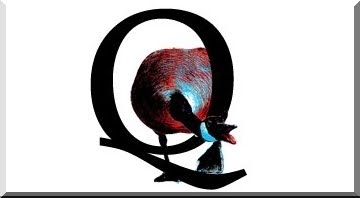 Moth Damaged Fruit Photo By Dr. Timothy J. Smith WSU-Spokane
Moth Damaged Fruit Photo By Dr. Timothy J. Smith WSU-Spokane
By Brody Levesque (Washington DC) Apr 13 | In a new study recently released, British agricultural scientists have discovered that treating the larvae of the 'Codling Moth' species with female pheromones, means that males are attracted to other males and females remain unfertilised, preventing reproduction. Previously, the only way to prevent them killing crops was spraying fruit with pesticides, which had the effect of killing other harmless insects and disrupting the food chain.
According to agricultural experts in both the U. S. & the UK, Codling Moths are responsible for millions of pounds/dollars in losses to Orchard growers caused by the damages inflicted by their larvae. Codling Moths lay their larvae on apple and pear trees and the worms can ruin entire harvests by tunneling through the fruit.
Dr. Timothy J. Smith, an expert agricultural specialist from Washington State University in Spokane wrote:
Codling Moth has been the key insect pest of apples in Washington since the early 1900's. Adoption of new control strategies is accelerating, as growers are beginning to realize the older "easy" management methods are becoming less reliable in high pressure regions. Recent demonstrations of the use of pheromone confusion (supplemented by traditional sprays) in large contiguous blocks has reassured growers that the newly developed method works, though this method remains more expensive than presently available effective products. This pest remains one of the more difficult to manage with newer lower-toxicity control products, such as the insect growth regulators, due to adult and larval behavior that differs significantly from many other Lepidoptera pests. Unlike most in this genus, the larvae of Codling Moth does not consume leaves or fruit surface tissue. To be effective, an insecticide must have contact action on the adult, egg or very young larva in the few hours it remains on the foliage or fruit surface. Research shows promise of possible new control products.Pheromone confusion: This approach has proven to be the most effective alternative control program in large trials and grower adoption over the past 16 years. Over half of the acres of Washington apples were treated with pheromone emitters during the past ten growing seasons. Growers apply pheromone releasing devices each season just prior to the flight of the first males. The pheromone in the orchard air make it very difficult for males to find and mate with females. Females that mate outside of the treated block may enter a pheromone treated block, or males may find and mate with females near the edge of treated areas where pheromone coverage is less consistent. Due to this "edge effect," most successful pheromone treatments have been over very large acreages.
In an article by the pinknews.uk, a Sainsburys British grocery store chain spokesman said:
"Codling moths have the ability to devastate entire crops if left uncontrolled. The new technique means males are attracted to males, disrupting the breeding cycle and reducing dramatically the number of eggs able to produce baby moths." He added: "Pheromone is a natural substance and, unlike other chemicals, is safe to use on both conventional and organic crops."
Alan Stubbs, chairman of conservation charity Buglife, said said he approved of the method.
“Using a technique to protect crops that does not rely on sprays which affect other species is the safest way to control a pest,” he added.





















3 comments:
Pheromones are not just for insects now. Today we find in human pheromones too. Visit my site at LuvE (luvessentials.com)for more information about human pheromones.
Post a Comment